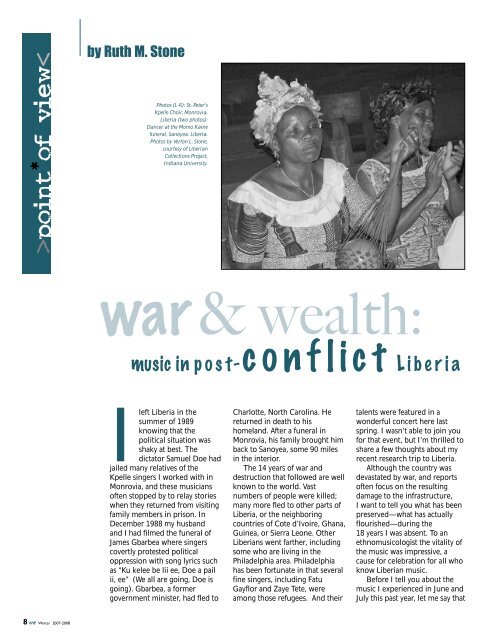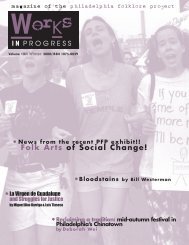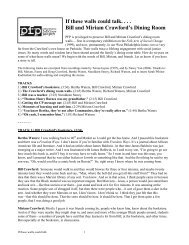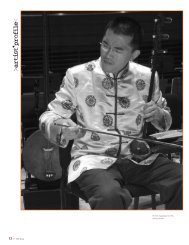African song / Fatu Gayflor ⢠War and wealth - Philadelphia Folklore ...
African song / Fatu Gayflor ⢠War and wealth - Philadelphia Folklore ...
African song / Fatu Gayflor ⢠War and wealth - Philadelphia Folklore ...
You also want an ePaper? Increase the reach of your titles
YUMPU automatically turns print PDFs into web optimized ePapers that Google loves.
point*of view<<br />
by Ruth M. Stone<br />
Photos (L-R): St. Peter’s<br />
Kpelle Choir, Monrovia,<br />
Liberia (two photos):<br />
Dancer at the Momo Kaine<br />
funeral, Sanoyea. Liberia.<br />
Photos by Verlon L. Stone,<br />
courtesy of Liberian<br />
Collections Project,<br />
Indiana University.<br />
war & <strong>wealth</strong>:<br />
music in p o s t-conflict Liberia<br />
Ileft Liberia in the<br />
summer of 1989<br />
knowing that the<br />
political situation was<br />
shaky at best. The<br />
dictator Samuel Doe had<br />
jailed many relatives of the<br />
Kpelle singers I worked with in<br />
Monrovia, <strong>and</strong> these musicians<br />
often stopped by to relay stories<br />
when they returned from visiting<br />
family members in prison. In<br />
December 1988 my husb<strong>and</strong><br />
<strong>and</strong> I had filmed the funeral of<br />
James Gbarbea where singers<br />
covertly protested political<br />
oppression with <strong>song</strong> lyrics such<br />
as “Ku kelee be lii ee, Doe a pail<br />
ii, ee” (We all are going, Doe is<br />
going). Gbarbea, a former<br />
government minister, had fled to<br />
Charlotte, North Carolina. He<br />
returned in death to his<br />
homel<strong>and</strong>. After a funeral in<br />
Monrovia, his family brought him<br />
back to Sanoyea, some 90 miles<br />
in the interior.<br />
The 14 years of war <strong>and</strong><br />
destruction that followed are well<br />
known to the world. Vast<br />
numbers of people were killed;<br />
many more fled to other parts of<br />
Liberia, or the neighboring<br />
countries of Cote d’Ivoire, Ghana,<br />
Guinea, or Sierra Leone. Other<br />
Liberians went farther, including<br />
some who are living in the<br />
<strong>Philadelphia</strong> area. <strong>Philadelphia</strong><br />
has been fortunate in that several<br />
fine singers, including <strong>Fatu</strong><br />
<strong>Gayflor</strong> <strong>and</strong> Zaye Tete, were<br />
among those refugees. And their<br />
talents were featured in a<br />
wonderful concert here last<br />
spring. I wasn’t able to join you<br />
for that event, but I’m thrilled to<br />
share a few thoughts about my<br />
recent research trip to Liberia.<br />
Although the country was<br />
devastated by war, <strong>and</strong> reports<br />
often focus on the resulting<br />
damage to the infrastructure,<br />
I want to tell you what has been<br />
preserved—what has actually<br />
flourished—during the<br />
18 years I was absent. To an<br />
ethnomusicologist the vitality of<br />
the music was impressive, a<br />
cause for celebration for all who<br />
know Liberian music.<br />
Before I tell you about the<br />
music I experienced in June <strong>and</strong><br />
July this past year, let me say that<br />
8 WIP Winter 2007-2008














